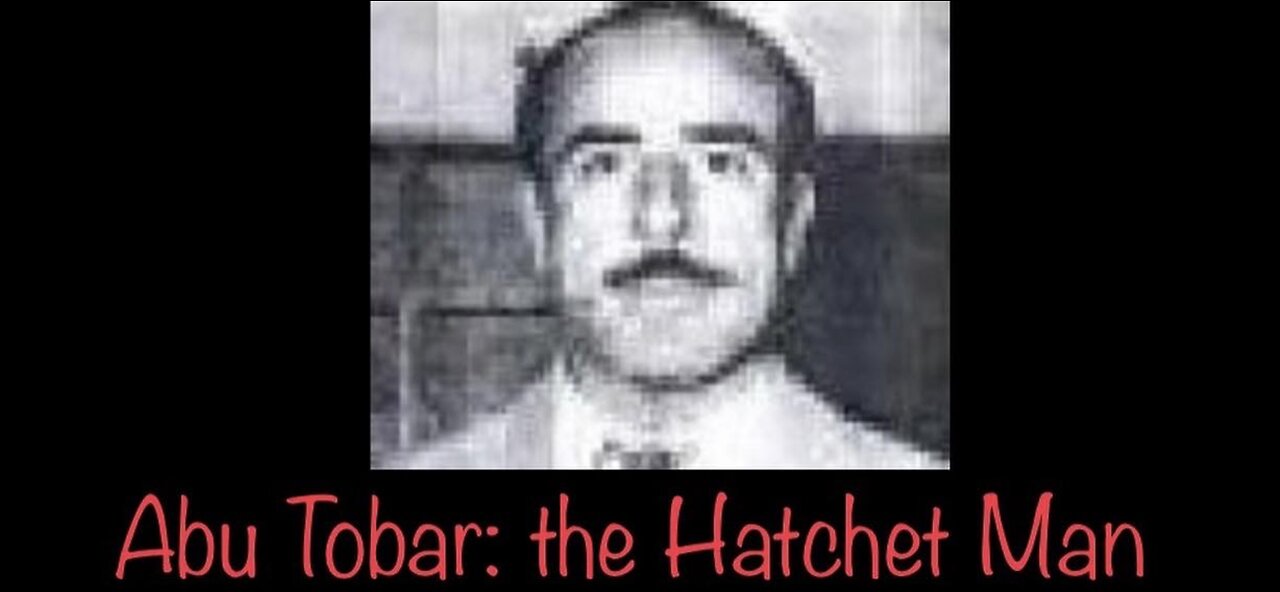Premium Only Content

Iraqi Serial Killer Abu Tobar #truecrime
In the early 1970’s a vicious killer stalked the city of Baghdad. Those he killed sometimes recieved strange phone calls before having their homes invaded and their heads bashed in. In some cases he killed whole families at a time to satisfy his greed and bloodlust. This case differs from others covered on this channel because to this day there is a question as to whether the man and accomplices who the murders were attributed was actually the killer or scapegoats and the real killer was actually Saddams secret police.
Hatem Kazeem Al-Hadum. Also known as Abu Tubar, the hatchet man.
Hatem was born in 1932 in Hillah, Iraq. He briefly served as a policeman after school until 1951. After this he studied at the Air Force academy but was kicked out after he began flying training aircraft like a stunt plane in 1956.
At this point he traveled to Kuwait and studied business. Hatem returned to Iraq to work as an accountant until he was arrested for misusing state funds. He was sentenced to 2 and a half years in jail.
After being released, Hatem moved to Europe, specifically West Germany. He spoke several languages including English, German, Persian, Arabic, and Kurdish. These language skills were a great benefit as he began smuggling weapons and cars into Greece, Turkey, and Syria. After spending several years as a smuggler Hatem returned to Iraq in the early 1970’s.
Iraq had changed while Hatem was in Europe. In 1968 there was a coup in Iraq and in 1969, Saddam Hussein officially took power. During his reign, the regime’s secret police killed thousands of people, and some believe the Abu Tubar murders were committed at the behest of the government to justify unwarranted searches and arrests of those who spoke out against the regime. An interesting side note is that while the nickname given to the killer translates to the hatchet or cleaver man, the weapon used was more often a metal pipe.
The first known murder was that of a Jewish man in the Bataween neighborhood in Baghdad in early 1973. This area is near to the Palace. The killers MO was to call the victim, likely to confirm they are home, before knocking on the front door and forcing his way in once it was opened. Blood was smeared on the walls and was sometimes used to write threats. The first victim turned out to be a poor man and the killer gained little if anything from the attack.
The second attack claimed the lives of a husband and wife. Majida Al-Hamami and her husband Rashid Murad Rashid lived in the Mansour neighborhood. Using the skills he learned at the police academy, the killer scouted out the home then approached soon after the first murder in 1973. He pushed his way into the home and used a metal pipe to threaten the couple into telling him where they hid their valuables. When this failed he beat them to death then ransacked the house.
For the next murder the killer was more ambitious, targeting retired police chief Bashir Al-Sultan and his family on April 9th of 1973. For this murder it is suspected that Hatem recruited his nephew and possibly other family members to commit the heinous act.
The crew watched the home from the garden of an abandoned house next door in the early morning hours. They waited until they knew the family was asleep before they moved in. They got in through an open window and massacred wveryone inside the house which included Bashir, his wife, their young son, and Bashir’s nephew.
The city of Baghdad was struck with terror as the murders escalated. People avoided leaving their homes and locked every door and window. A friend of mine from Baghdad told me that his family told him that they sometimes slept on the roof to avoid being in the house if Abu Tubar broke in.
In September of 1973, Hatem and his nephew targeted Jean Ernest in the Karadat Maryam neighborhood which is next to what would become the Green Zone. The killers cased the home before breaking in and murdering the occupants, Jean, his wife, and daughter. They were all killed by blow to the head, before the killers stole all the cash and valuables in the house. There was likely a fight as blood belonging to Hatems nephew was found inside.
The final murder stands out as different from the others. The victim was a barber. During his questioning, Hatem said he killed the man after they argued over the price. After killing him, he stole not only cash, but his carpets and furniture.
With a murderer on the loose, the situation had become dire in Baghdad. The police conducted routine searches and the city was under a strict curfew. Under the guise of searching for the killer Saddam used the opportunity to purge dissidents.
The search for the killer and anyone who spoke against Saddam lasted until the nation became focused on the war between Israel and Egypt in October 1973. The killer was also inactive during this conflict which some believe was because he took part in the fighting while others believe the regime was simply not promoting the line to engage in their searches for those who spoke out against the government.
The angle of a government conspiracy is reinforced by the fact that the task force tasked with catching Abu Tubar was raised at one point by Saddams bodyguards. There was also a phone call from someone who claimed to be the killer that was traced back to the presidential palace. When this was investigated the task force was disbanded and the investigator who ran the call center was imprisoned.
The reign of terror ended in September of 1974. Someone called the police to report a suspicious man hanging around an abandoned house. When police arrived and stopped him, they initially were inclined to let him go when he explained he was a former policeman. However, when they had him show them his home, they found a stockpile of items stolen from the victims and he was arrested.
During the interrogation, Hatem confessed to the 12 murders although this was likely coerced. His wife also said that he came home covered in blood on multiple occasions. He claimed that he killed the victims to “set them free.” He was executed. The suspect was paraded through the streets in a white lab coat spattered with blood.
Hatem Al-Hadum was sentenced to death. The execution took place at 5am on October 8th 1974. We will never know for sure whether he was the true culprit or if the series of murders was committed by the government for the benefit of the regime.
-
 12:03
12:03
MonsterWatchTrueCrime
11 months agoSerial Killer Danny Rolling
2512 -
 LIVE
LIVE
Due Dissidence
12 hours agoIsrael STRIKES IRAN, Iran HITS BACK, Marandi OWNS Media Hack, Is This THE END of MAGA?
3,336 watching -
 2:12:15
2:12:15
Nerdrotic
5 hours ago $6.38 earnedChris Cottrell Interpreting the Geomorphology of Carolina Bays | Forbidden Frontier #105
39K5 -
 LIVE
LIVE
Spartan
3 hours agoPro Halo Player | Halo Infinite Ranked Arena into SWTOR and/or Gears Beta
149 watching -
 LIVE
LIVE
This is the Ray Gaming
2 hours ago $0.43 earnedPushing for Rumble Creator Program
154 watching -
 LIVE
LIVE
Damysus Gaming
2 hours agoDune: Awakening - Grinding for that Ornithopter - Guild Work! Drown in Some Spice!
57 watching -
 3:42:31
3:42:31
EricJohnPizzaArtist
4 days agoAwesome Sauce PIZZA ART LIVE Ep. #51: Music Night featuring Sophmore John!
20K2 -
 5:46:03
5:46:03
sophiesnazz
7 hours ago $3.32 earnedWE VIBING! !socials
44.1K3 -

FoeDubb
11 hours ago🏰KINGDOM MENU: 👑HAPPY FATHERS DAY TO MY FELLOW RUMBLE DADS.👑THIS IS OUR DAY DILLY DILLY
17.9K2 -
 2:57:07
2:57:07
Illyes Jr Gaming
3 hours agoIt's Sunday! It's GAMEDAY!!! LET'S GO!
13.7K